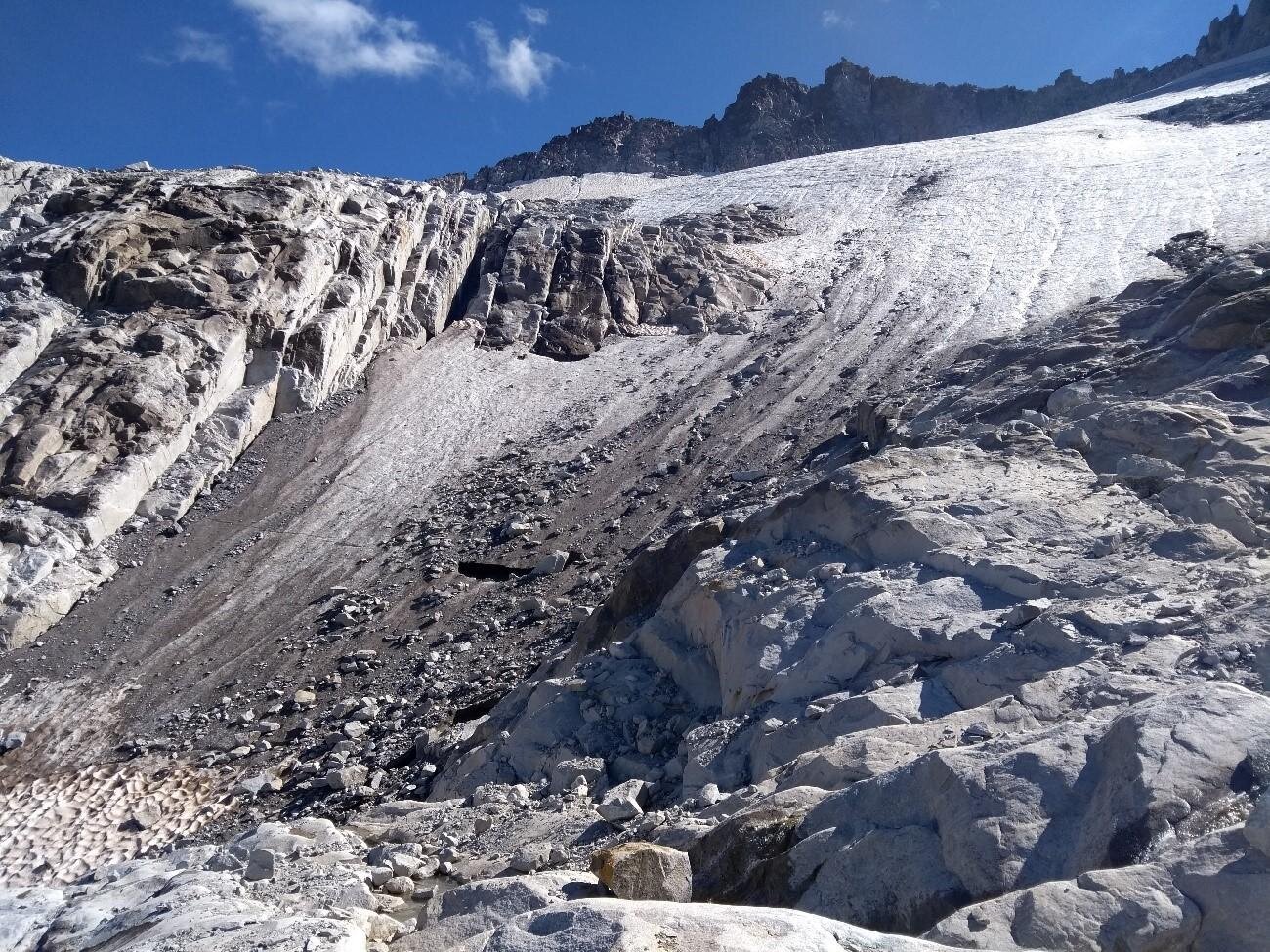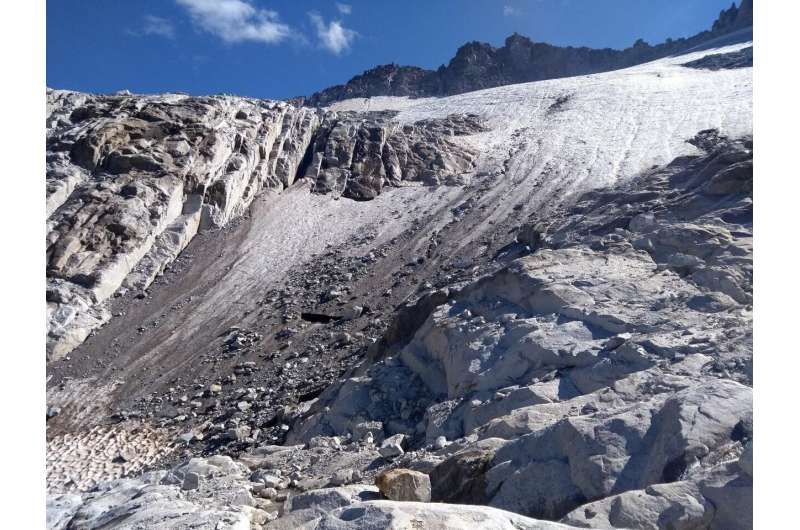

Adrián Martínez Fernández, the specialist technician in charge of the Digital Mapping and 3D Analysis Laboratory at the Centro Nacional de Investigación sobre la Evolución Humana (CENIEH), is the lead author of a paper published in the journal Land Degradation & Development on the evolution of the surface and possible disappearance of Maladeta, one of southern Europe’s largest glaciers, and one of the three most extensive on the Spanish slopes of the Pyrenees, covering some 30 hectares.
The results obtained show that in just 10 years the glacier front has retreated by more than 50 m (averaging over 5 m/year), and ice thickness of about 7 m (-0.7 m/year) has been lost, while between 2019 and 2020, almost two hectares (20,000 m2) of the ice surface measured during the first campaign in 2010 disappeared.
“At this pace, it is estimated that the Maladeta glacier in Aragon could disappear by the end of the next decade, as has already happened with other glaciers. More than 60% of the Pyrenean glaciers that existed in the middle of the nineteenth century have already been lost,” comments Martínez.
The systematic observation of glaciers has been of particular interest for decades due to their links with global climate change. Understanding the behavior of these environments highly sensitive to climatic variability helps climate change to be comprehended and modeled. Nevertheless, generating quantitative data for temperate high-mountain regions like the Pyrenees is not as commonplace as for other mountainous regions of Europe.
10 years of monitoring
Information about this glacier in the Aragonese Pyrenees was obtained by applying geomatic techniques to document the snow and ice surface of its front. Like the glacier itself, these techniques have evolved over these 10 years of monitoring, with different equipment: total stations, GNSS devices, terrestrial laser scanners and drones.
The research group began taking measurements with traditional survey equipment like total stations, although over recent campaigns drones have become increasingly important because they permit recording much more detailed and extensive information of the glacier front.
“We have obtained significant information about the degradation of the cryosphere in the high Pyrenees, with an accuracy and detail that are unusual in the study of glaciers over such a long period,” says Martínez.
More information:
A. Martínez‐Fernández et al, The final countdown? Monitoring the rapid shrinkage of the Maladeta glacier (2010–2020), Southern Pyrenees, Land Degradation & Development (2023). DOI: 10.1002/ldr.4886
Citation:
The Pyrenean glacier of Maladeta could disappear by the end of the next decade (2023, September 6)
retrieved 6 September 2023
from https://phys.org/news/2023-09-pyrenean-glacier-maladeta-decade.html
This document is subject to copyright. Apart from any fair dealing for the purpose of private study or research, no
part may be reproduced without the written permission. The content is provided for information purposes only.